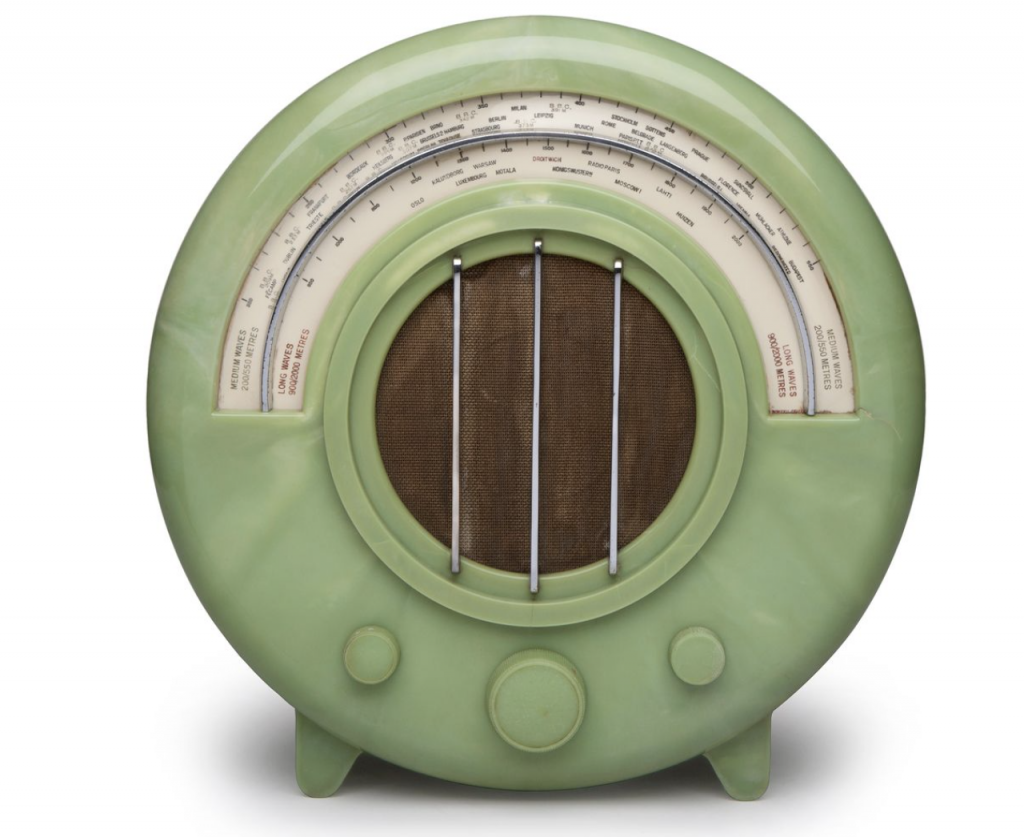Music originally filled our homes both physically and metaphorically. Radios and phonographs were of polished wood and polished brass. I have a Brunswick Phonograph from this period. It’s larger than my desk. In the 1920s, music was furniture.
A hundred years has completely transformed how we play music. The revolution sparked off in 1934, when Ekco released a radio that shook off the dead wood. Within that spark, there’s a lesson for cybersecurity.
Ekco, or E.K. Cole Ltd. in England, held a design competition. Scores of designers entered. Ekco received scores of designs. At worst, the designs were plastic copies of the furniture. At best, these designs had ornamentation which looked like the radios of the day. Wells Coates entry was a radical departure. But before we get to Coates, let’s talk a bit about the human need to copy what has come before.
Skeuomorph. That’s the design term. Skeuomorphism is one way to take a design one metaphor at a time, by keeping cues that remind people of what came before. A good example today is the Tesla and other electric cars having front grilles, a callback to when air cooled the gasoline engine. Skeuomorphism makes the new feel familiar, but it can also be a trap. Consider that most cars blow air in three directions: feet, face, or defrost. It is a holdover from when a physical tube controlled airflow and the tube only pointed in one direction at a time. Just as there’s no need for a grill, there’s no need for this climate control limitation.
Wells Coates put it this way: “We must not forget that the past all too often obstructs our view of the future.”
Coates looked beyond the past to come up with a round radio, a plastic radio, a radio that came in colors, a radio that was free from skeuomorphism. I wonder how Coates did it. Was it because he was an architect and not a product designer? Was it because, though Canadian, Coates was born in Japan and had traveled the world before he turned 18? Whether being an outsider or having range contributed, or something else, Wells Coates and Ecko redefined the product category. “They started to get a character and identity of their own, a radio-ness about them if you will, that was separate and different from furniture,” designer Dick Powell explained in The Genius of Design. With the Ecko AD-65, “their new identity was forged and off radios went.”
Research into user interface design finds skeuomorphism softens the adoption curve for those familiar with the past products. (See: Affordances and Metaphors Revisited.) But skeuomorph designs don’t do anything for people who are completely new to both the interface and the metaphor.
When protecting the organization, the first question is whether the security capability will be new to the organization or an extension of what’s in place now. If it is an improvement, giving a nod to the past by carrying certain things forward will ease adoption. If it’s completely new, best to throw away the furniture and start fresh.
Let go of the past to design the future.

This article is part of a series on designing cyber security capabilities. To see other articles in the series, including a full list of design principles, click here.
Posted by